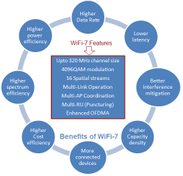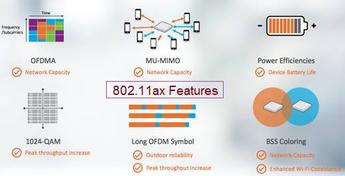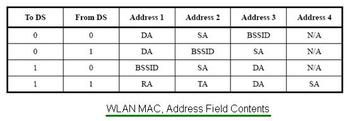WiFi 7 vs. WiFi 8: Key Differences and Comparison
Advertisement
WiFi 7 (802.11be) was developed to enhance data rates and reduce latency, especially in crowded environments. It succeeds WiFi 6 (802.11ax). WiFi 8 (802.11bn), the subsequent standard, focuses on improving the reliability of WLAN connectivity, increasing manageability, and boosting throughput. Let’s compare WiFi 7 and WiFi 8 to understand their similarities and differences.
What is WiFi 7?
IEEE is developing WiFi 7 specifications under the 802.11be series. It will support double the bandwidth and higher spatial streams compared to 802.11ax. WiFi 7 is expected to support data rates as high as 40 Gbps and is expected to launch in 2024. It’s being developed by the IEEE 802.11be EHT working group.
The main features of WiFi 7 are as follows:
- Coordinated Multi-user MIMO: Supports 16 data streams simultaneously.
- Multi-Link Operation (MLO): Enables simultaneous transmission and reception across various bands/channels. This increases throughput, lowers latency, and improves reliability.
- Access Point Coordination
- Maximum Channel Size: Up to 320 MHz.
- Higher Modulation Schemes: Supports up to 4096 QAM with enhanced OFDMA.
What is WiFi 8?
IEEE is developing WiFi 8 specifications under the 802.11bn series.
The main features of WiFi 8 are as follows:
- Integrated mm-wave operations.
- Distributed MLO (Multi-Link Operation).
- Multi-AP Coordination.
- Channel Bandwidth: Up to 320 MHz and above.
- 8192 level QAM modulation scheme
- Designed to meet specific requirements of applications such as AR/XR/VR, smart home appliances, and gaming.
Difference between WiFi 7 and WiFi 8
The following table uses various parameters to highlight the similarities and differences between WiFi 7 and WiFi 8 technologies.
| Features | WiFi 7 | WiFi 8 |
|---|---|---|
| Standard | IEEE 802.11be | IEEE 802.11bn UHR |
| Launch Date | 2024 | 2028 |
| Data Rate (Maximum) | 46 Gbps | 100 Gbps |
| Frequency Bands | 1 to 7.25 GHz (Includes 2.4, 5, and 6 GHz) | 2.4, 5, 6 GHz and mm-wave bands |
| Channel Size | Up to 320 MHz | Up to 320 MHz or Above |
| Modulation | 4096 QAM with OFDMA (extensions) | 8192 QAM OFDMA |
| MIMO | 16X16 UL/DL MU-MIMO | 16X16 UL/DL MU-MIMO |
| Advanced Features | Multi-RU | Distributed MLO, Multi-AP coordination |
Conclusion
Both WiFi 7 and WiFi 8 focus on enhanced data rates, efficiency, and reliability in Wi-Fi networks. These networks optimize Wi-Fi connectivity in crowded environments, ensuring improved performance and reduced interference.
- Follow the latest information from IEEE 802.11 WLAN Working groups.
Advertisement
 RF
RF







